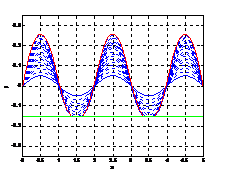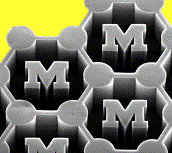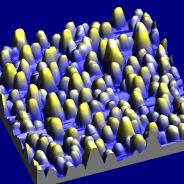

|
AFM image: visualizing Fe catalyst nanoparticles on an Al2O3 support |
|
Two-stage evolution of thin-film catalyst for growth of substrate-bound carbon nanotubes |
|
Mostafa Bedewy mbedewy@umich.edu Eric R. Meshot emeshot@umich.edu
Abstract By modeling the two distinct stages of film agglomeration and coarsening, we aim to elucidate the nuances of particle formation from catalyst thin films for carbon nanotube (CNT) growth. Namely, the objective of this work is to show 1) under stress, inherent roughness in the catalyst film evolves into larger structures that eventually separate into individual islands; and 2) substrate-bound particles coarsen and conglomerate through surface diffusion; and 3) the shape of the individual particles is dependent on the interplay between surface forces, which is in accordance with theory. With enhanced control of this vital stage of catalytic CNT growth, we can achieve control of the material characteristics in order to engineer next generation electronics, high-strength cables, and highly conductive wires. The eventual goal beyond this work is to develop a comprehensive model that enables engineering of particle size distributions and spacing, stabilizing small particles for single-wall CNT synthesis, and designing better catalysts for CNT growth (e.g., different materials or heterostructures). |


|
Simulated thin-film evolution: film agglomerates in presence of stress |